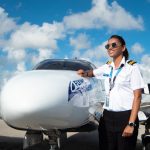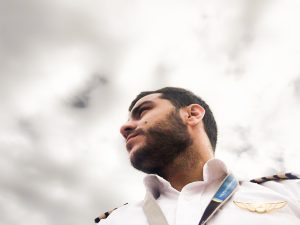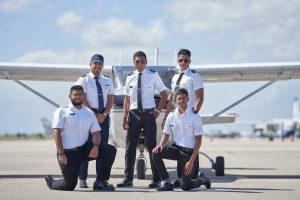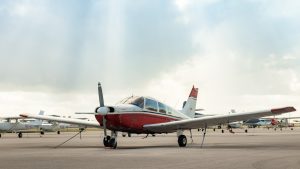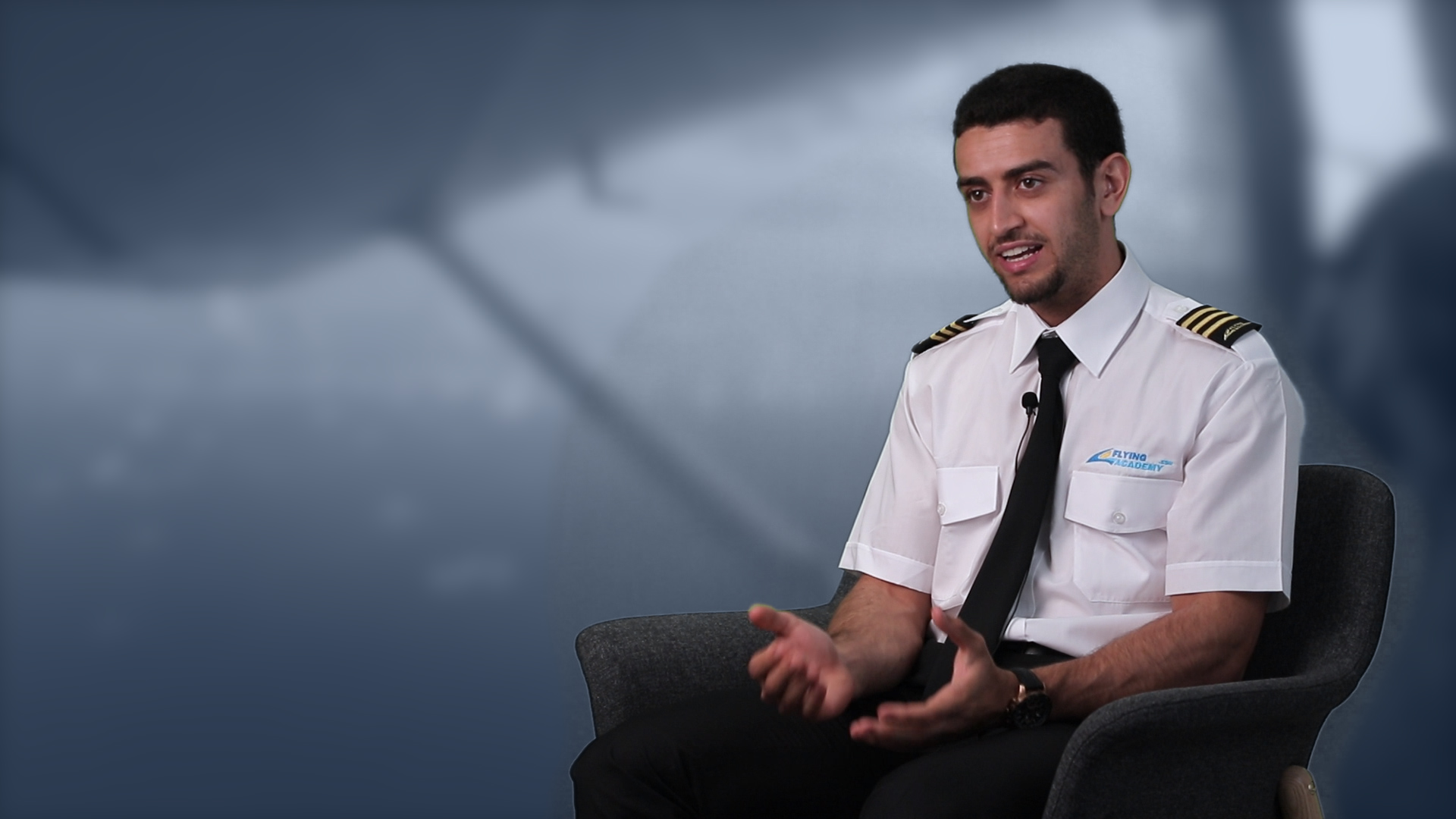
What is the first step we take as soon as we arrive to the cockpit?
The first step is to make sure that everything is clean, organized, and you have absolutely no loose objects in the aircraft.
Then, you have to make sure that, of course, you have everything you need in terms of equipment and documents, which is your knee-board and logbook. Maps and checklists must be within reach and right next to you.
Whatever we don’t need for the flight, which is a bag and airplane documents, can be placed in the back and must be secured to avoid any trouble during the flight.
Do you have any ritual to follow? A flow of consecutive steps you follow on repeat?
As soon as I arrive at the airplane, first things first, I remove the pitot cover and the gust lock.
After that, I make sure that the luggage is fully secured.
Then I go to the switches. The beacon light is very important and has to be on. The remaining tasks, such as landing lights and navigation lights can be switched off at the beginning of the flight.
Then, I check the fuel manually, even though we have it shown on the fuel gauges. I have to make sure that there’s enough fuel which is required for the flight.
After this, I check the landing gear and the flight controls, and follow the checklist to ensure that each item is completed.
If you would choose one tip, in terms of cockpit organization to give to a student, what would it be?
I would recommend them to never be in a rush, no matter what. Regardless of if he/she is late or if the weather is deteriorating. It’s better to regret being down here, than being up there. Of course, ground preparation is key. The more ground preparation you do, the less work you would have to do up in the air. It’ll also keep you as a head of the airplane. It’s crucial to be aware of what to expect throughout the course of the flight.
Would you recommend student pilots to base their navigation on maps or GPS, since they will be only flying IFR once in the airlines?
Since they’ll be flying under visual flight rules at the beginning of their training, they will have to learn how to fly with a map in the first place. The map is the primary source of information and navigation for the student pilots. Certainly, throughout the training a student will learn how to fly with a GPS. Despite the fact that it will always be considered as a backup option comparing to the map, which will always be there to assist a student throughout any circumstances.
If the weather en-route seems uncertain during flight preparation, would you recommend the student pilot to go and come back in case the weather turns out to be really bad, or not depart at all?
In case the weather is unclear or uncertain en-routes, I will not let the student pilot depart. In Flying Academy the safety of the student is a top priority and, as we say, every takeoff is an option but every landing is mandatory.
Let’s say you are approaching a short field and you aren’t sure whether or not you will make it; at what point you decide: ‘Okay, I won’t make it, go-around’?
Usually, when I’m approaching in airfields, there must be three criteria which have to be met: airspeed, altitude, and weather. If I am approaching too fast, too high, and I’m losing ground contact or visual references, I initiate to go-around straight away, no matter what.
How do you manage the approach, make sure that all checklists and briefings are done?
When I approach a familiar or unfamiliar airport, I always make sure that I’m head of the airplane, no matter what. This helps me a lot to decrease the workload during my flight and not skip any critical item during the landing.
I always prepare my charts to know which traffic pattern has to be followed and the length of the runway available.
Then, I get the weather information. If it’s available, I get an idea on the runway in use. If it’s not possible, I check the windsock and I will choose the appropriate runway according to the direction of the wind. Then I go through the approach and landing checklist to make sure that no critical item has been skipped for the landing.
Usually after a go-around with deteriorating visibility, RVR or increasing cross-wind velocity, how do you go through the decision of either initiating a second approach or diverting?
After the go-around, I initiated hold, I stabilized the airplane to make sure that I have much less workload as expected.
Then I go through the DODAR check. I go through the ‘D’, which is the “Diagnose”, so the visibility has deteriorated on final approach, we lose visual contact with the ground, so that’s why we initiate the go-around.
Then we have the ‘O’, which is the “Options”. We can either choose to hold over the point and wait for the middle for the visibility to improve if we have enough fuel. If we don’t have enough fuel anymore, we consider going to the alternate direction. Then if we see that the visibility is improving, we decide to stay next to the airport, hold for a while and then initiate a second approach.
After this, my co-pilot and I discuss the approach together, make sure that all briefings are done, and then for the ‘R’ we “review” the decision that has been made in the beginning to make a second approach and to make sure that the visibility is really improved, compared to the first approach.
See you soon, aviators!

